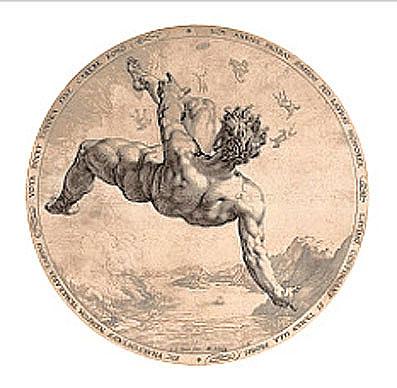Robert Mapplethorpe and the Classical Tradition
dal 7/12/2004 al 16/1/2005
Segnalato da
7/12/2004
Robert Mapplethorpe and the Classical Tradition
State Hermitage Museum, St. Petersburg
Photographs and Mannerist prints. The exhibition explores the classical photography of Mapplethorpe mirrored in the dramatic yet graceful work of 16th-century Dutch and Flemish Mannerist prints by artists such as Hendrick Goltzius, Jan Harmensz. Muller, Jacob Matham, and Jan Saenredam, themselves inspired by classical and Italian art. The show focuses on Mapplethorpe's relationship to the elaborate forms of Mannerist art, in particular the study of the human form in all its sensuous manifestations.

The State Hermitage Museum is proud to present the exhibition ''Robert Mapplethorpe and the Classical Tradition: Photographs and Mannerist prints'', organized by the State Hermitage Museum and Solomon R. Guggenheim Museum, New York.
The exhibition will be on display from December 8, 2004 to January 16, 2005 and explores the classical photography of Robert Mapplethorpe mirrored in the dramatic yet graceful work of 16th-century Dutch and Flemish Mannerist prints by artists such as Hendrick Goltzius, Jan Harmensz. Muller, Jacob Matham, and Jan Saenredam, themselves inspired by classical and Italian art. The exhibition focuses on Mapplethorpe's relationship to the elaborate forms of Mannerist art, in particular the study of the human form in all its sensuous manifestations.
Deeply rooted in Italian art, Mannerism was an international movement and style which arose after the death of Raphael in 1520 for about one century.
When Mapplethorpe tragically died at the young age of 42, he was considered one of the most important photographers of his time. His elegant and sometimes shocking nudes, the black-and-white portraits, flowers, and still-lives, as well as the powerful, often surprisingly tender images of sexual sadomasochism, have had an undeniable impact on the art world.
From Michelangelo to Antonio Canova, Mapplethorpe was inspired by Renaissance sculpture and the elegance of late-18th-century neoclassicism. In his quest for the ideal form, Mapplethorpe described photography as ''the perfect way to make a sculpture.†A selection of sculptures in the exhibition highlights the dialogue of Mapplethorpe's photographs and the Mannerist prints with classical antiquity, further illustrating their compelling relationship and a broader understanding of the history of art.
Mapplethorpe described photography as ''the perfect way to make a sculptureâ€/ He looked for perfection in form with every subject he talked, ripe with sculptural tension, are imbued with an erotic ambiguity. Furthermore, the classical ideal was not only a poetic inspiration for him but also an ethical model that he sought to emulate throughout his short life. Mapplethorpe was trained in painting and sculpture and his early interest focused on the nature of the painterly and sculptural processes. In the late 1960s and early 1970s Mapplethorpe juxtaposed images of neoclassical monuments with those of his own nude body, where the positions of the live figure mimed exactly the positions on the statue.
He combined harmonious sculptural excellence with photographic absoluteness, and by uniting historical sculpture with the model Mapplethorpe strove to mirror art in life and art in photography. In his way, he was able to express radical themes in typical historical terms. Partaking of classical naturalism, his compositions are meticulously thought out and reflect a highly detailed perusal of figural gestures, from the Antiquity and perfection of Michelangelo to the elegance of 18th and 19th century artists, such as Auguste Rodin, with whom he shared an attraction to Eros and sensuality of chiseled bodies. The vital anatomical forms of his portraits, such as the female bodybuilder Lisa Lyons and the statuesque dancer Derrick Cross, find their roots in Antiquity, and here find their mirror in the highly expressive and sculptural 16th-century prints of Jan Harmensz. Miller's The Rape of the Sabine Women and Jacob Matham's muscled and dynamic Apollo in the Clouds darting through the picture plane. Mapplethorpe's effective minimal black and white palette, through which he explored paradoxes and relationships, expresses a certain poetic and melancholy quality, while the Mannerists's magisterial tours de force are rendered through startling light, texture, and three-dimensionality.
The exhibition's curators are Arkady Ippolitov, Curator of Italian Prints, The State Hermitage Museum, and Germano Celant, Senior Curator of Contemporary Art, Solomon R. Guggenheim Museum, New York with assistance of Karole Vail, Solomon R. Guggenheim Museum, New York.
For future information and images, please contact:
Lena Getmanskaya
Press Manager The State Hermitage Museum Tel. (812) 110-95-02 Fax: (812) 312-15-67
Michael Ward Stout
President The Robert Mapplethorpe Foundation
120 Wooster Street, 4th floor New York, NY 10013 Tel: 212-941-4760
Sean Kelly Gallery
528 West 29th Street New York, NY 10001 Tel. (212) 239.1181
Image: Phaeton 16th century. Hendrick Goltzius after Cornelisz. Engraving
Exhibition location: Rooms à 28-31, the Winter Palace
State Hermitage Museum
2, Dvortsovaya Ploshchad (Dvortsovaya Square)
190000, St Petersburg
The museum is open daily, except Mondays, from 10:30 a.m. to 6 p.m. The museum closes at 5.00 pm on holidays and preceding days



